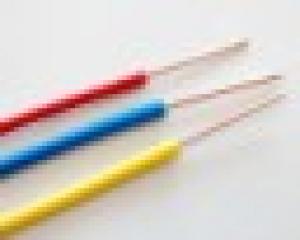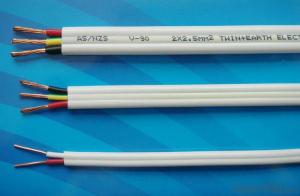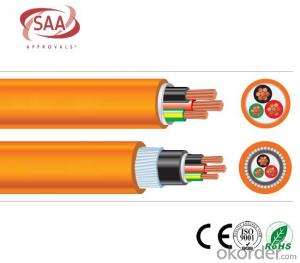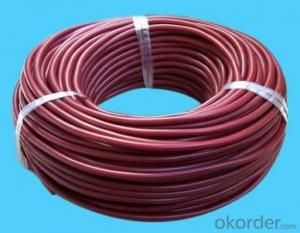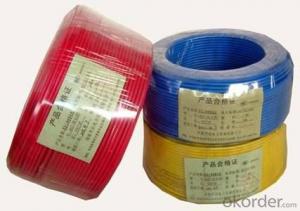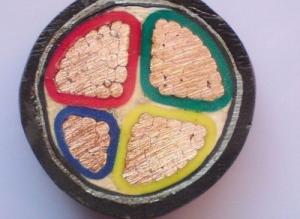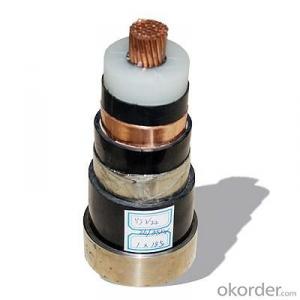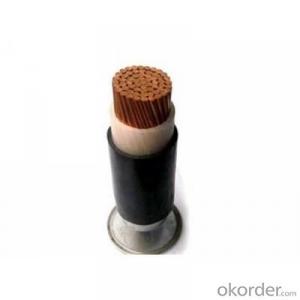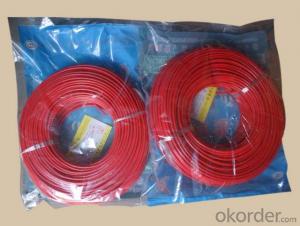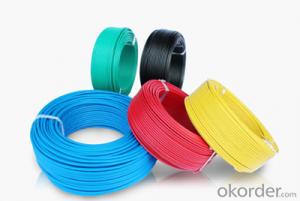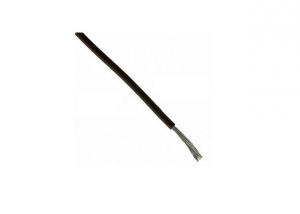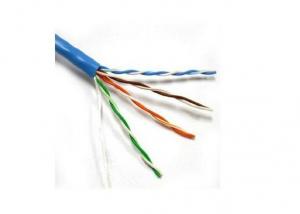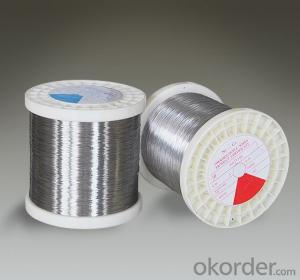BV1 standard 1.5 square copper wire wholesale Decoration Engineering Quality
- Loading Port:
- Shanghai
- Payment Terms:
- TT OR LC
- Min Order Qty:
- 100 m
- Supply Capability:
- 500000 m/month
OKorder Service Pledge
OKorder Financial Service
You Might Also Like
Product use:
This product is suitable for rated voltage of 450/750V and below, household electrical appliances, instruments, telecommunications equipment, power line laying cable (wire).
The conditions of use:
1, AC rated voltage Uo/U and below 450/750V
2, cable allowed working temperature of not more than 70 DEG C (BV-90, BV-105)
3, cable laying temperature should be not less than 0 DEG C
4, external diameter (D) allowed bending radius is less than 25mm of cable should not be less than 4D,
The diameter (D) for 25mm and above the allowable bending radius of cable should not be less than 6D.
Type and name
BV copper core PVC insulated wire poly aluminum
BLV aluminum core wire insulation level of poly aluminum chloride vinyl
BVR copper core PVC insulated flexible cords of poly aluminum
BVV copper core PVC insulated poly vinyl poly aluminum aluminum sheathed round wires
BVVB aluminum core copper core PVC insulated poly vinyl poly aluminum aluminum sheath parallel wire
BLVVB aluminum core copper core PVC insulated poly vinyl poly aluminum aluminum sheath parallel wire
BV-105 copper core PVC insulated wire heat at a temperature of 105 DEG C
Working temperature
Type BV-105 does not exceed 150 degrees, the other can not exceed 75 DEG C, laying temperature not lower than 0 DEG C.
Technical performance
1, the product line and finished product wire insulation, anti - 20 + at room temperature in water at 5 DEG C for at least 1H, can withstand voltage test stipulated in the following table.
2, the cable has good electrical insulation properties, mechanical properties and not delay performance, reliable quality, convenient and durable.
3, finished product wire insulation or sheath surface to have the manufacturer name, model and voltage continuous mark.
- Q: Can I run a ground wire from and electrical motor to a bolt that is screwed into wood? Will this work? I have a hot tub and replaced the motor, the new motor has the thick copper ground wire mounted on the back so the wire I have is too short now to reach to where it was grounded before. I ran the wire from the motor to a bolt that is screwed into the wood frame of the hot tub. The old ground went from the motor to the metal brain box witch is also attached to wood so I figured my alternative fix is OK?
- To be effective and prevent the person using the whirlpool hot tub being electrocuted from a wiring fault, the grounding cable needs to be connected from the tub power switch right back to the ground busbar in the electrical distribution box - and extended by use of screwed connections that can't come loose wood can shrink /expand not to code. It's no use connection to a water pipe and hope it makes a good electrical path back to the electrical distribution board as plastic pipes could be used to repair copper ones and the conduction path is lost. The usa NEC codes demand a separate ground cable is installed as many water pipes are plastic non conductive. Alternatively install a GFCI unit (still requires a ground cable) for 30 mA ground fault leakage protection. Note for uk readers this is called an RCD in uk and obligatory in uk bathroom electrical installation.
- Q: i am starting to get where i need to be looking at colleges. i want to work in the field of electrical, wiring stuff and all that. i am confused as to what an electrical engineer actually does. i want to work with my hands and work wiring stuff. does an electrical engineer do that or do they check other peoples work and make sure things are right. i am confused. please help me.
- No, they DESIGN other people's work, invent electronic devices, maintain large-scale power grids, figure out the math needed for signal processing. It's a figuring-it-out job, not a wiring job. You may want to be an electrician, and you probably need a trade school rather than a college.
- Q: I was just wondering is all electrical high voltage lines including low voltage is isolated to prevent electrical shock.
- Some do and some don't ! High voltage power line that runs at 20000 volts to 50000 volts is a bare wire. Lower voltage street line from pole to pole (about 5000 volts) is also bare wire. After step down by the small street transformer then feed to the house 240 volts is insulated wire. All the AC wiring inside the house carries 120 volts and 240 volts is insulated wire. Most electronic circuit board has printed circuit which has hundreds of bare wire.
- Q: I have a module panel which is suppose to transfer dc to ac electric. Is the wires soldered on the back of the panel or any metal on the sides? What colors are the wires?
- What model panel? I seriously doubt that the Panel has a built in inverter. Most inverters are installed in the basement near the main electrical panel. DC goes to the inverter from the panels. For Outdoor electrical installation most local electrical codes require conduit (pipe). Check with your local electrical inspector or ask a local contractor
- Q: I was painting my friend's warlock for him so I had taken everything off of it (bridge, knobs, etc.) except for the pickups. I didn't want to reinstall the pickups because I've never done that before. But as fate would have it, the pickup wires snapped during the whole painting process and now I have to solder them back in somehow. Does anybody know of any websites that explain how to install pickups? Unless, of course, it's so easy that you can explain it to me right here. Thanks a ton.
- Well try peeling back a little bit of the plastic covering on the wire . this will make soldering easier. Next check where you are going to make your connection. It should be kinda clean (free from paint) Then heat up a soldering gun and get your solder. You might come out easier if someone else takes a pair of tweezers and holds the wire in place . basically heat the solder over the connection point untill a small amount drops in place. It should cool and seat wire where you want it. If not just heat the solder back up a little and remove wire and start process over again
- Q: I have a live wire in my basement that is just dangling with wire nuts on the wires. It is a 3 wire cable w ground. I also have a wire I disconnected when remodeling that fed an outlet and ceiling light. This was a 2 wire with a ground. Can I use a junction box to tie the two cables together to get power back to my outlet and ceiling light? Would I just put a wire nut on the extra wire from the 3 wire cable? I'm assuming this would be the color wire that the 2 wire doesn't have.Thanks!
- We only have 120 or 240 volts in AMERICA, THAT'S 120 OR 240 Each leg carries 120 Volts What is this 110 you speak of ? If its a 240 line that breaker amp is at least 30 and you will burn your house down, if its a green wire than yes but make sure its a15 or 20 amp breaker, if 20 amp than make sure both cables are 12 Gage. Don't hook up a 20 amp breaker with 12 Gage wire tieing into a14 Gage wire or you will burn your house down.
- Q: Bridge 380V strong wire, and now put into the cable to the signal interference?
- Heat shrink tube can be inserted into the cable, heat shrink tube is not much more than the cable on the line!
- Q: What is the role of the two-color wire and monochrome wire?
- Strong electricity for the AC, will produce electromagnetic waves, interference with the weak. Strong current (alternating current) generated by the magnetic field generated by the adjacent wire current, although the current is weak, but enough to affect the same weak weak current, resulting in accidents
- Q: --A wire of resistance 10 ohms is bent to form a circle. Calculate the resistance between two points at the end of the diameter.--I can't understand this. Please show me the steps for finding the answer. I will appreciate your help.
- I'm okorder
- Q: I use the rosin with the solder, like DIY mp. but I do not know why the wire hit tin tin was Asia opened, and no sticky, under the novice, ask for more advice
- Dark tube wall clean and tidy, not exposed; trunking affect the appearance
Send your message to us
BV1 standard 1.5 square copper wire wholesale Decoration Engineering Quality
- Loading Port:
- Shanghai
- Payment Terms:
- TT OR LC
- Min Order Qty:
- 100 m
- Supply Capability:
- 500000 m/month
OKorder Service Pledge
OKorder Financial Service
Similar products
Hot products
Hot Searches
Related keywords
